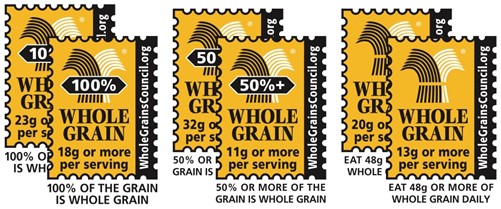White Whole-Wheat Flour
Read Time: 2 min 12 sec
Cookies, pastries, and baked goods are synonymous with the holiday season. This year try giving your holiday baking a nutrient boost without compromising taste by substituting white whole-wheat flour for traditional all-purpose flour (“white” or “refined” flour). White whole wheat flour comes from a different type of plant that gives it a lighter color and milder taste compared to its traditional counterpart.
WHOLE grain flour made from WHITE wheat!
Not all “white” foods need to be avoided. Similar to regular whole-wheat flour, white whole-wheat flour is made using all three layers of the grain – bran, germ, and endosperm.
In the baking aisle, you will generally find three types of wheat flour: regular whole wheat, white whole-wheat, and enriched (refined) all-purpose flour. Only whole-wheat and white whole-wheat are classified as whole grain. Whole grains provide fiber and nutrients that are removed from all-purpose flour.
Regular Whole-Wheat: Regular whole-wheat uses all three layers of the grain and comes from traditional red wheat. This is what gives whole-wheat its’ dark color and coarse texture. Regular whole-wheat also has a slightly more bitter flavor when compared to white whole-wheat and refined wheat.
White Whole-Wheat: White whole-wheat is also a whole grain but comes from white wheat which lacks the bran color found in other wheat varieties. White wheat is milder in flavor and has a softer texture than traditional red wheat making it a good alternative for individuals who prefer the taste of a lighter wheat, and make it more suitable for sweet baked goods.
Refined Wheat: Refined wheat is stripped of one or more grain layers (bran, germ, or endosperm) during the refining process. This removes about 25% of the grain’s protein and more than 50% of its nutrients, including essential vitamins, minerals, and fiber. Refined grains are often “enriched” with added nutrients to replace those lost in the refining process. However, the lost fiber is not replaced.
Nutrient comparison of ¼ cup white whole-wheat flour, regular whole-wheat flour, and all-purpose flour.
|
|
White Whole-Wheat Flour (Gold Medal) | Regular
Whole-Wheat Flour (Gold Medal) |
Enriched All-Purpose Flour (Gold Medal) |
| Calories | 100 | 100 | 110 |
| Total Fat | 0.5g | 0.5g | 0g |
| Total Carbohydrate | 21g | 21g | 23g |
| Fiber | 3g | 3g | Less than 1g |
| Protein | 4g | 4g | 3g |
| Iron | 6% Daily Value (DV) | 4% DV | 8% DV |
| Potassium | 2% DV | 2% DV | |
| Thiamin | 15% DV | 15% DV | 15% |
| Riboflavin | 4% DV | 2% DV | 10% |
| Niacin | 8% DV | 8% DV | 10% |
| Folate | 4% DV | 2% DV |
20% |
Using White Whole-Wheat Flour in the Kitchen
Traditional whole-wheat flour is not ideal for baking because it tends to make the baked goods heavier and changes taste and texture. Some recipes call for ½ whole-wheat and ½ refined all-purpose flour to reduce the differences but result in a final product that is only 50% whole grain.
Since white whole-wheat has a lighter texture and milder flavor than traditional red wheat, it can be used as a whole grain substitute in baking without severely compromising taste or texture. White whole-wheat flour can be substituted in a one-to-one ratio for all-purpose flour in most recipes. To ensure the right texture of the baked good, adjustments may need to be made to the liquid in the recipe, increasing as necessary to achieve the desired batter or dough consistency.

Next Article: Winter Workout Safety
